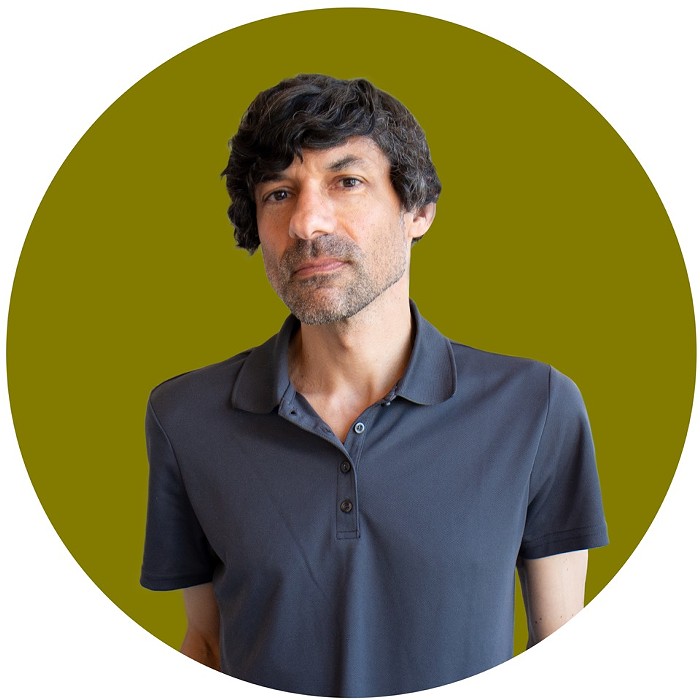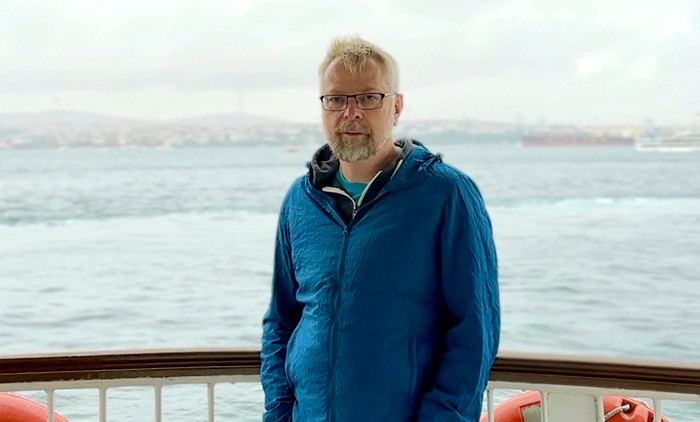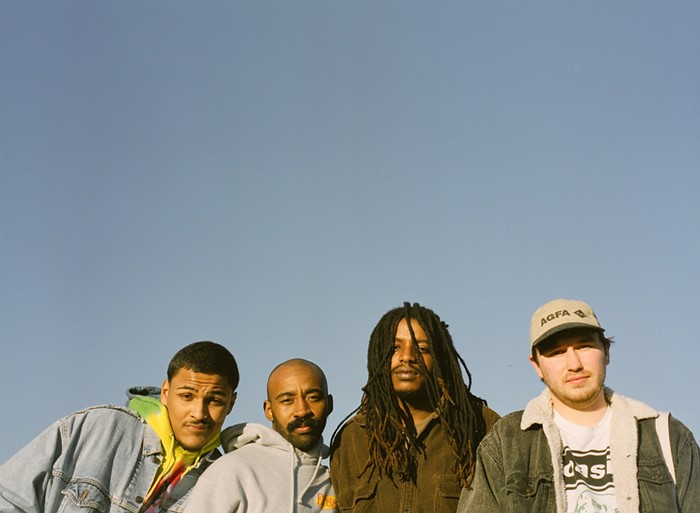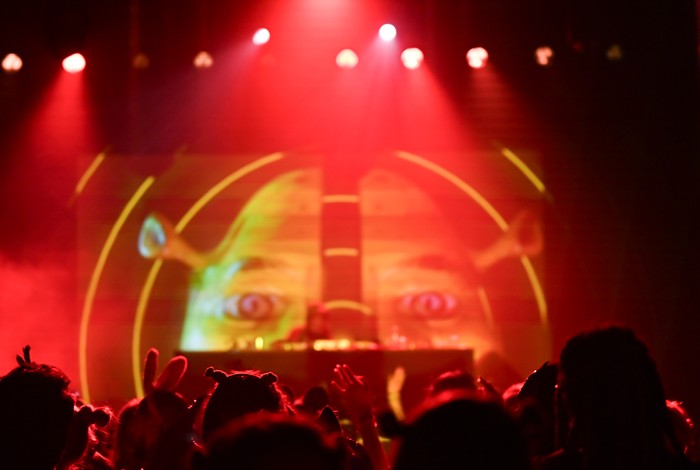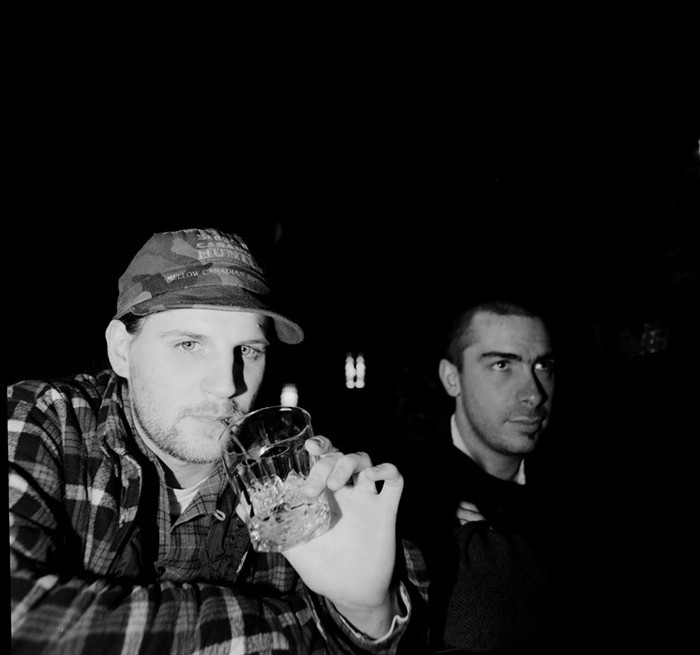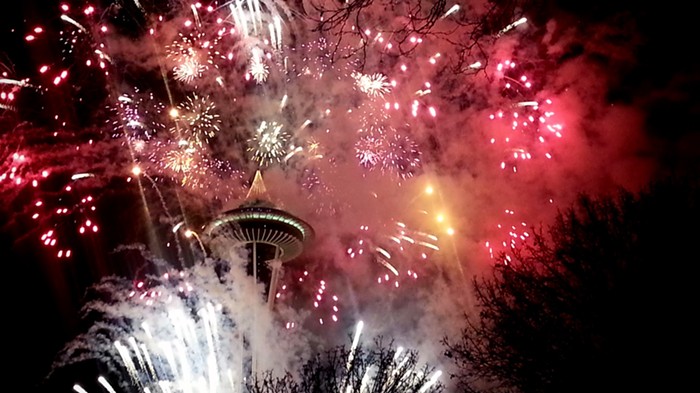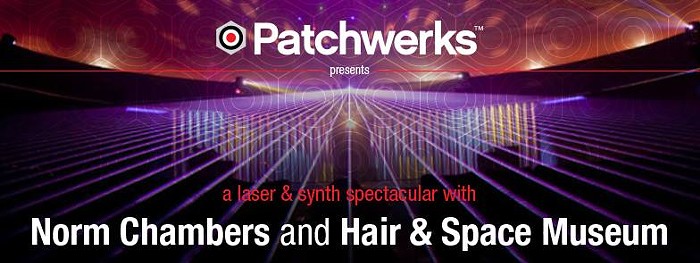
In a move that makes perfect sense, Seattle synthesizer retailer Patchwerks is hosting a concert at the Seattle Center Laser Dome on Sunday, July 16. Featuring two of the city's most accomplished purveyors of deep-space ambient music—Norm Chambers (formerly Panabrite) and Hair & Space Museum (Stranger freelancer Emily Pothast and David Golightly)—a Laser & Synth Spectacular will give you exactly what it says: retina-dazzling visuals accompanied by music that's at once transcendent and palliative. In a time when individual stress levels seem to be spiking (it can't just be me, can it?), an audio-visual extravaganza like this is just what the head doctor ordered. To find out more about the motivations behind the Laser & Synth Spectacular, I interviewed Patchwerks co-owner (and excellent electronic musician himself) Tom Butcher.
The Stranger: What motivated you to want to hold a show in the Laser Dome?
Butcher: At Patchwerks, we started out holding meetups about every quarter. The meetups and building a community around synthesizers and electronic music makers is a core endeavor of Patchwerks. Now that the physical shop is open, we are expanding the number of events we do but scaling back on the big meetups to about twice per year.
Since we’re all music lovers, we were looking for a way to enhance our meetups with live performances. After all, it’s one thing to talk about the gear all day long, but it’s another one entirely to hear how artists can harness all the power and controls to make music that is interesting, beautiful, thought-provoking, and expressive. Our holiday 2016 meetup was the first time we held a show in conjunction with the event (Qoqo Roboqs and Swift-Tuttle performed), and it went so well we decided to expand it for this month’s event, Summer Sine Waves 2017.
At the same time, [co-owner Cindy Reichel] had a personal connection with someone who works running the lasers, and after a conversation or two the idea really germinated from there. We caught one of the new, modernized productions a few months ago and were really impressed with the space, the lasers, and the opportunity to do something a little different. So gradually we locked in on the July 16 event date for both the Summer Sine Waves event and the Patchwerks Presents show at the Laser Dome “Synth Spectacular” as our first foray.
Are there any logistical issues working at the Laser Dome that you dont have to deal with at more conventional music venues? I hate to say anything definitive here until the show is behind us to save any superstitious laser bugs from zapping us. The team at the Pacific Science Center is top-notch and used to hosting all kinds of events, from private parties to wedding receptions to music events like ours, so they make everything really easy.
Then there’s the lasers themselves. We work to coordinate the show between our hosted acts and the Science Center’s professional Laser Artist (cool title, right?) to figure out what works, timing, and all that. Many of the normal shows at the Laser Dome are a mix between programmed graphics and more improvised visual effects. So any specific graphics or words that need to be displayed must be arranged beforehand, so that the Laser Artist can get all that programmed into the machines.
That said, any coordinated visuals with musical acts require some preparation or at least a connection so that the artists can play off each other at the time of the show, so in a way the Laser Dome is just an extension of that. I will say that in the nightclub world, the sequence of events, how tickets are sold, handling the bar, load-in, soundcheck, etc. is a well-established routine, and because the Laser Dome is special, we need to ensure our audience is prepared to be there on time (doors at 5:30 p.m., show at 6:00 p.m. sharp).
What factors led you to book Norm Chambers and Hair & Space Museum to perform at the Synth Spectacular debut? For both acts we felt strongly that the quality of their music and aesthetics would mesh really well with the visual capabilities of the Laser Dome. Also, we love both acts and consider Norm, Emily, and David part of our extended Patchwerks family. Norm’s music almost borders on synesthesia, having layers and layers of sonic colors all swirling together. He utilizes the latest in Eurorack modular synthesizers, so that was also a big draw for us. Norm is also a contributor to Modular on the Spot, and we love how he can throw out challenging constructions at those events as well as offer exquisitely crafted rhythmic colorscapes at the same time. Perfect for lasers, right?
On the Hair & Space Museum side, their music is like hallowed emotion with a tinge of ultra-modern mysticism. Emily’s vocal incantations and various processing mixed with David’s intricate synthesizer work combine to produce this out-of-body experience into and out of tonality. So naturally they would be awesome to host in a laser dome! It’s hard to think of another synthesizer artist in Cascadia who can match David’s virtuosity, and he and Emily are some of the most interesting, intelligent people you will ever meet.
Will this be part of a series or is it a one-off? If the former, whom do you hope to book for it? That’s a great question. We’re amping up our promotion of entertainment shows with our Patchwerks Presents series, and so far we’ve had a great response. Last month we hosted Shawn Rudiman (7th City/Pittsburgh) for a gear chat and an improvised techno performance, and he really brought the goods on both fronts.
One of our central missions is to educate people about the technology as well as the artistry: how to understand the equipment and its capabilities but also to show some tips and techniques for how people use it all. We also hosted Sunshine Jones recently, and we have also collaborated with Mokedo on artist workshops. So Patchwerks Presents will certainly continue, both at our shop and at various nightclubs, galleries, and venues across the city. If the Laser Dome works out well for our audience and the artists, it’s a logical place to build on our trajectory.
As far as whom to book, our methodology has been to focus on artists who utilize synthesizers, from the vintage to the ultra-modern, to make interesting sounds. We also love to feature local artists who are already part of our extended family and Patchwerks community. We’re looking for great artistic role models, and we are especially keen to feature a roster of people whose backgrounds, genders, and points of view represent the widest sample of the real world we can get. Most importantly, we want to book synthesizer artists who inspire and are willing to teach.
How has Patchwerks’ business been since setting up in a brick-and-mortar location? It has been amazing! We started selling equipment at our meetups last year and opened the Patchwerks shop in November, 2016. We quickly ran out of space and have expanded to the rest of the floor in our building, and we have space now to use for small workshops and lessons.
One of the best feelings we get when working at the shop is whenever a customer comes in and says, “Thank you for doing this for Seattle!” It happens a lot, actually, which warms all of us on the team. We’ve grown steadily over these past months, and we’re poised to make some really exciting announcements about our product line in the near term.
The brick-and-mortar shop is key to our operation, because since we are building community and educating at the same time we’re a retail outlet, having a place where people can come in, meet, try the gear, ask questions, jam a little together in the showroom is crucial. We’re still a small business, so a lot of times we can’t compete on price with some of the more established synthesizer or music retail businesses. That’s okay, because we think there is enough business to go around.
Before Patchwerks opened, there was nowhere in the state of Washington to go check out esoteric Eurorack synthesizers or find someone in a shop knowledgeable enough to help you out. And sure, you can pull up your web browser and start ordering modules (there are great tools out there like Modular Grid), but you’re not going to get a lot of helpful advice. These things are complicated, and even for established synthesizer people sometimes it can be hard to follow. If you want to get into synths and even modular synthesizers and don’t have a foundation to build upon, you have to do a lot of learning to even figure out where to start. Online, you certainly can’t put your hands on the knobs and patch cables to get a feel for the instrument. That’s why we’re here: synthesizer community, education, and retail.
